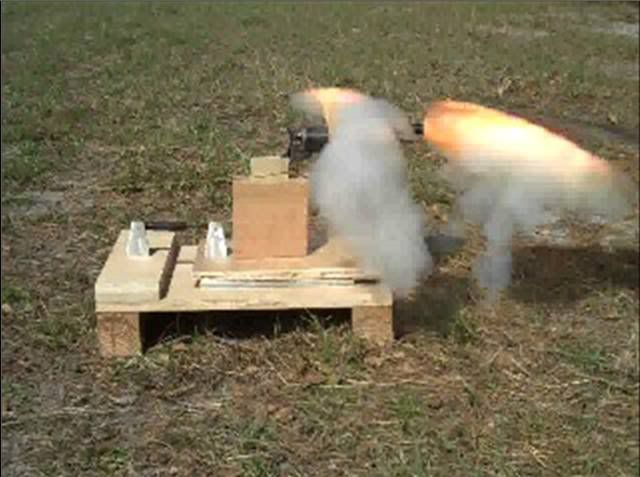You are looking at an Uberti Walker sitting in a test fixture that is used to evaluate test firing certain cartridges. This Walker was converted to fire the .45 BPM cartridge. The question is: Why is the flame non-symmetric? Notice how the flame jets out downward. Discuss...
Sorry for the poor quality of the picture. It was taken from a camcorder on a bright sunny day with the sun at its highest point.

The .45 BPM cartridge being fired contains 55 grains of Goex FFFg, a fiber wad, and a 150 grain Biglube bullet (second from the right). That's a .45 Colt on the left side.

Sorry for the poor quality of the picture. It was taken from a camcorder on a bright sunny day with the sun at its highest point.

The .45 BPM cartridge being fired contains 55 grains of Goex FFFg, a fiber wad, and a 150 grain Biglube bullet (second from the right). That's a .45 Colt on the left side.

Last edited:
